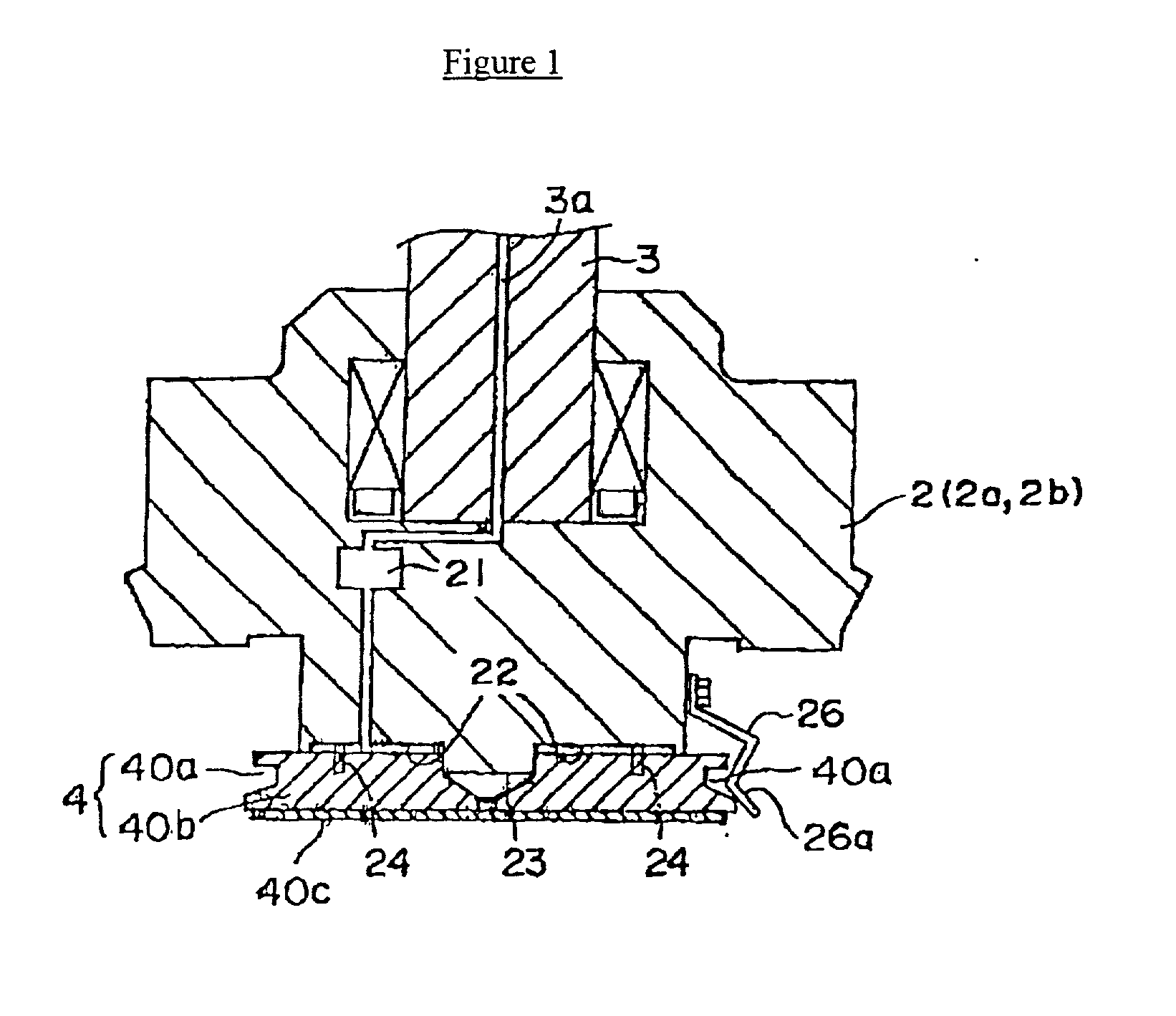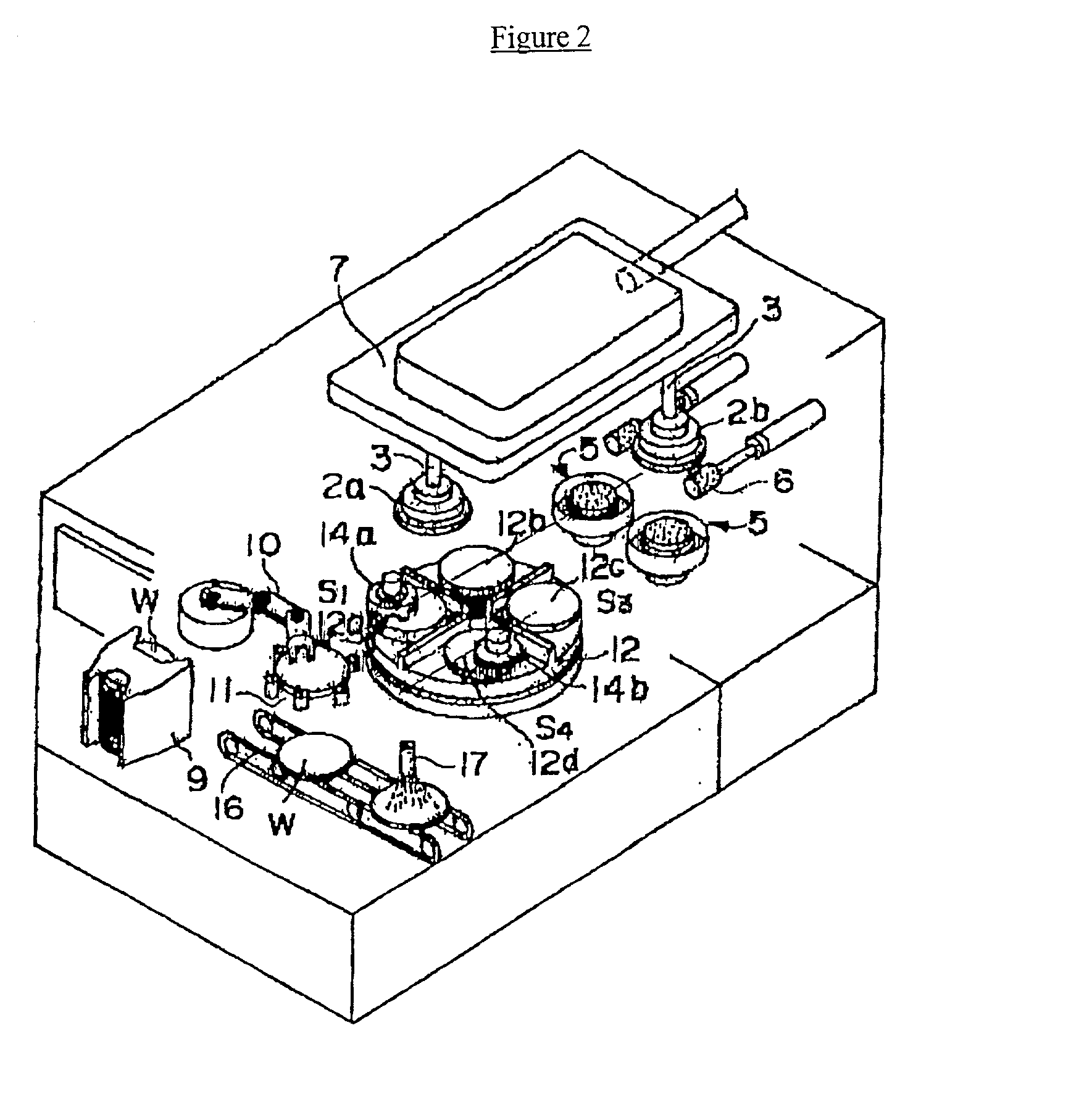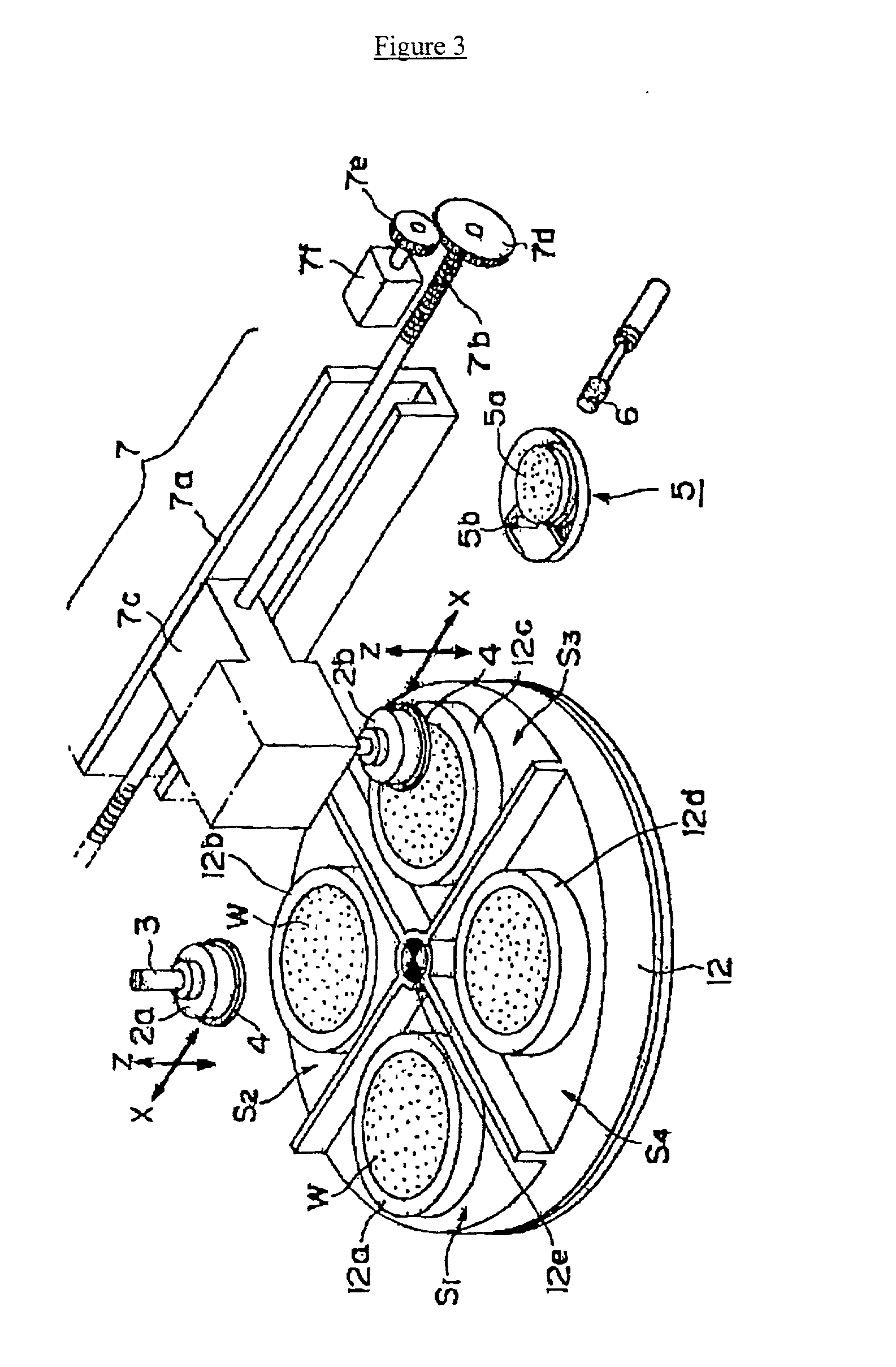Polishing device and polishing pad component exchange device and method
a technology of component exchange and polishing device, which is applied in the direction of grinding machine components, metal-working machine components, manufacturing tools, etc., can solve the problems of inability to manually enter the polishing device in person, the polishing device is worn, and the utilization efficiency of the polishing device is reduced
- Summary
- Abstract
- Description
- Claims
- Application Information
AI Technical Summary
Benefits of technology
Problems solved by technology
Method used
Image
Examples
application example 2
[0114] Application Example 2
[0115] In this example, too, a pad support method based on vacuum suction was used, and a polishing pad component (4) which had been obtained by attaching 101000 / SUBA400 (polishing pad manufactured by Rodell Co.; diameter: 150 mm) onto a polisher supporter constituted by an alumina substrate was set on the polishing pad storage shelf (19) by means of a manual operation by using a CMP polishing device wherein the polishing pad component was smaller than the polishing object.
[0116] Next, the automatic exchange button of the front panel of the CMP device was pressed by an operator. As a result, the air cylinder (8) was activated, and after the side of a used polishing pad component (4) which was being drawn toward the polishing head (2) based on vacuum suction had been gripped by the exchange arm, the vacuum suction force which had been responsible for the fixation of the polishing pad component (4) was turned OFF. Next, the exchange arm, which had been grip...
application example 3
[0118] Application Example 3
[0119] A magnetic fixation method was used as a method for fixing a polishing pad component in this example. Regarding this example, the polishing pad component (4) was constituted by pasting 101000 / SUBA400 (polishing pad manufactured by Rodell Co.; diameter: 150 mm) onto a polisher supporter constituted by a magnet (SUS410) with a thickness of 0.2 mm, and an unused polishing pad component (4) thus constituted was set on the polishing pad storage shelf (19).
[0120] Next, the automatic exchange button of the front panel of the CMP device was pressed by an operator. As a result, the exchange arm gripped the used polishing pad component (4), and subsequently, the electromagnet which had been responsible for the fixation of the polishing pad component (4) was turned OFF. The exchange arm transported the used polishing pad component (4) while still gripping it, which was then stored in the lowermost layer of the storage shelf (19). Subsequently, the unused poli...
application example 4
[0121] Application Example 4
[0122] A gadget fixation method was utilized as a method for fixing the polishing pad component (4) in this example. Regarding this example, the polishing pad component (4) was constituted by pasting 101000 / SUBA400 (polishing pad manufactured by Rodell Co.; diameter: 150 mm) onto a polisher supporter constituted by an alumina substrate, and it was used in a CMP polishing device wherein the polishing pad component was smaller than the polishing object. An unused polishing pad component thus constituted was set on the polishing pad storage shelf (19).
[0123] Next, the automatic exchange button of the front panel of the CMP device (1) was pressed. As a result, the used polishing pad component (4) was gripped by the exchange arm, and subsequently, a clamp which had been responsible for the fixation of the polishing pad component (4) was automatically detached. The exchange arm gripped the used polishing pad component (4), which was then stored in the lowermost...
PUM
 Login to View More
Login to View More Abstract
Description
Claims
Application Information
 Login to View More
Login to View More - R&D
- Intellectual Property
- Life Sciences
- Materials
- Tech Scout
- Unparalleled Data Quality
- Higher Quality Content
- 60% Fewer Hallucinations
Browse by: Latest US Patents, China's latest patents, Technical Efficacy Thesaurus, Application Domain, Technology Topic, Popular Technical Reports.
© 2025 PatSnap. All rights reserved.Legal|Privacy policy|Modern Slavery Act Transparency Statement|Sitemap|About US| Contact US: help@patsnap.com



